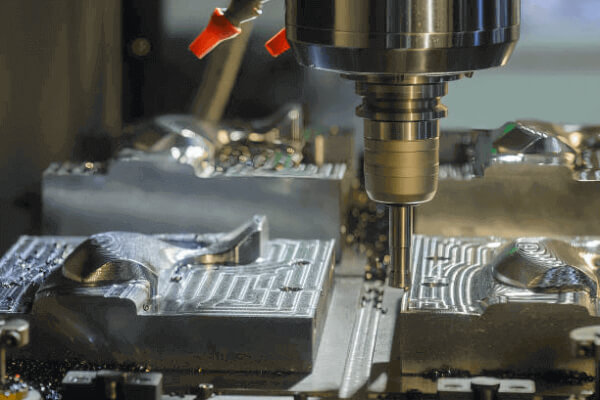CNC machining for rapid prototyping allows you to take advantage of the many benefits of computerised equipment to produce rapid prototypes, engineering models and high quality end use parts in the shortest possible time. Here are five reasons to consider CNC machining for your next rapid prototyping project.

CNC machining for mass production began in the 1970s, and as machines and software applications have continued to improve, CNC machining has become one of the fastest and most reliable methods of producing complex shapes in metals and hard plastics.
This speed applies to both set-up and machining times. Firstly, use modern CAD/CAM design software to convert a 3D part into a G-code cutting program within hours, then transfer it to a multi-axis milling machine.
Once programmed, a good milling machine or lathe can machine steel or aluminium at amazing speeds, turning a raw metal billet into a finished part in a matter of minutes.
Some manufacturing processes, such as injection moulding or die casting, require the use of hard moulds made from hardened or semi-hardened alloy steel. Depending on their complexity, these moulds can take weeks to make. Even vacuum casting requires the use of silicone moulds, which can take several days to prepare. Of course, for many projects this is well worth the effort, especially when reproducing subtle surface textures copied from a master mould. But for other jobs it can be a limiting factor, as CNC machining can produce a much smoother and flatter surface on engineering parts.
The only tools used in CNC millinghttp://www.mfgproto.com and turning are the hardened metal cutting blades mounted on the spindle. Different shapes and types of blades perform various cutting functions on the workpiece. With the right arrangement on the automatic rotary table, you can remove and replace these tools in seconds.
In a modern machine shop, there is no better way to achieve greater precision and accuracy than with computer controlled cutting tools. This level of accuracy typically achieves tolerances of +0.05mm or 50 microns. For the vast majority of commercial applications, this accuracy is more than adequate. And it is a repeatable tolerance, easily achieved over and over again in production runs of unlimited quantities of parts.
Achieve tighter tolerances required for demanding aerospace, automotive, or scientific applications by using special cutting tools under controlled conditions.
Designs can be changed very quickly by changing just a few lines of the G-code programme. This is particularly attractive for prototyping, allowing you to test different iterations and evaluate the results immediately. Adjusting programmes and making refinements “on the fly” at no extra cost can significantly shorten the overall product development cycle.
As long as the material is hard enough to resist deformation or melting under the pressure of the cutting action, the CNC machine does not affect it. This also helps in product development, or when you need to make several similar prototypes with slightly different mechanical or cosmetic properties. For example, the same design can be produced in hard plastic, aluminium or steel with only minimal adjustments to the speed and feed of the cutting tool.